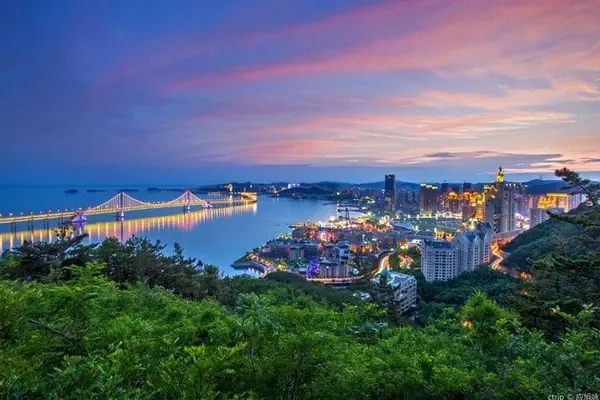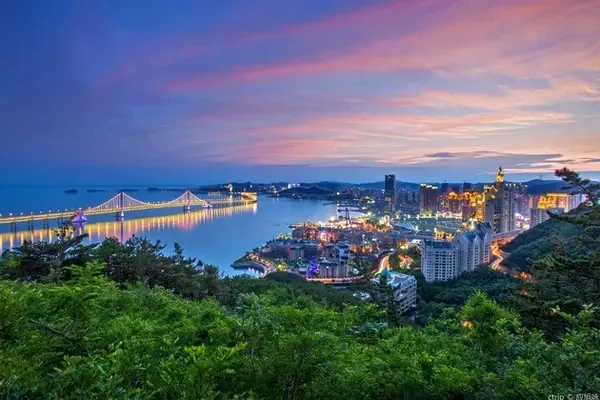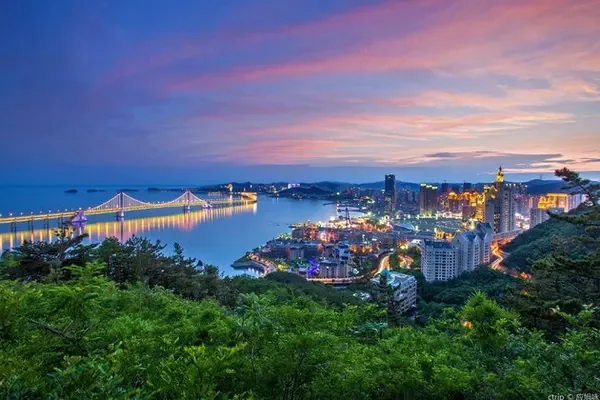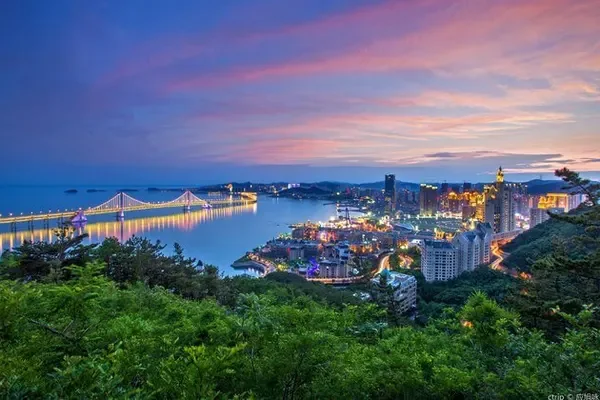Route: Street View Theater—National Art Museum—Wudaoying Hutong—Jingzhao Yin—Lama Temple—Beijing Confucian Temple and Guozijian Museum—Nanluogu Alley—Shichahai—Yandai Xiejie—Guangfu Temple—Houhai—Dashilan
The street scene in Beijing, this place used to be a street stage.





After breakfast, I came to the National Art Museum of China, thinking that I had come early, but I didn't expect that there was a sea of people inside. Tickets: Free, swipe your ID card to enter. The National Art Museum of my country is one of the top ten buildings on the 10th anniversary of the founding of the People's Republic of China. It has a particularly beautiful appearance, antique and majestic. The main building is in the style of an antique attic, with a large roof of yellow glazed tiles, surrounded by corridors and pavilions, with a distinctive national architectural style. The National Art Museum of China has the status of a national art museum. It is a national plastic art museum focusing on collecting, researching and displaying works of modern Chinese artists.




On the right side of the art gallery is the outdoor sculpture garden, where there are relatively few tourists and the sculptures are lifelike. The morning sun poured down and shone on the sculpture. Although the photo was somewhat backlit, the real scene and the surrounding green trees made this morning very quiet.










The National Art Museum of China has five floors. You can take the stairs or take the straight ladder up. It is too early, and sometimes the straight ladder is not open yet. There are a total of 20 exhibition halls on five floors, and there are 9 exhibition halls on the first floor; there are 3 small exhibition halls on the mezzanine of the first and second floors; 5 exhibition halls on the second floor; and 3 exhibition halls on the third floor, with a large exhibition area. Next to the elevator, there is a distribution map of the museum's exhibition halls, which is convenient for choosing to watch exhibitions.
The first exhibition we saw was "Essentials of Drawing Things", which is an exhibition of sketches from the museum's collection. After that, I saw a lot of paintings in the collection boutique exhibition hall.










The hottest exhibition of the day was "The Temperature of the Times" on the first floor. It was an art exhibition for the 60th anniversary of the founding of Shandong University of the Arts. There are many large sculptures and huge paintings in the exhibition hall, which are very shocking.








After watching the "Exhibition of Chinese Thangka Art", I always heard about Thangka art in the past, but today seeing is believing.

I really like watching the petroglyph art exhibition, it feels amazing, and there are video introductions in the exhibition hall.





In the depths of the right side of the National Art Museum of China are tall sycamore trees. The sun shines on the sycamore trees, and the leaves are shining with golden light, which is particularly poetic.




There are also many outdoor sculptures around here, which are relatively small, and ordinary tourists will not find it here.






Surrounded by plane trees, there is a fully transparent glass house, which is the cultural and creative center of the National Art Museum of China. There is an extremely beautiful petty bourgeoisie coffee shop hidden inside. If it was not recommended by my senior sister, I would definitely not find it here.

Cultural and creative products, various decorations, stationery are sold here, and I also saw the new favorite of my senior. At the end, I entered the coffee shop NAMOC COFFEE, which has two floors.


The environment is so beautiful that you can sit quietly for a day. The sunlight shines in through the floor-to-ceiling glass windows, and the golden reflection of the sycamore leaves is reflected on the tray, which is really pleasant.




The fragrant chocolate is really beautiful~

The chocolate muffins are a little tastier than Star Papa's.



Starting from Wudaoying Hutong, there are many scenic spots around. If you have enough time, you can experience it carefully for a day or two. In Beijing, hutong tour can be regarded as one of the special tourism, and Wudaoying Hutong is also one of the many popular hutongs. The name Wudaoying still has a small history, but what I like more is the sign about the Hutong at the entrance, and I also recorded a small video specially. I think this shape is very creative.

There are antique tile-roofed houses on both sides of the entire hutong, and some tile-roofed houses have red lanterns hanging in front of the door, which is particularly ancient; while some have been transformed into coffee shops, cultural and creative shops or jewelry shops, and the shops are also decorated in a very beautiful way. It looks modern and fresh. After all, it is now a very popular gathering place for literary petty bourgeoisie.




It was a bit lost to walk around inside, and finally went straight according to the vertical coordinates. I felt that I didn't get to the point of play. Maybe it would be more interesting here at night.





After that, I went to see Jing Zhaoyin not far away, mainly because I was interested in this name. It turned out that Jing Zhaoyin was the official name of the Han Dynasty in China, and it was equivalent to the mayor of the capital today in the Western Han Dynasty.
Coming out of Wudaoying Hutong, there is a long red wall across the road. Inside the wall is the Lama Temple. The Lama Temple is bigger than I imagined. There are three large archways on the periphery of Lama Temple, each of which is exquisite, and the tall archways are also very colorful. The handwriting on the front and back of the plaque is different, but when the sun is too strong, sometimes the golden words on the plaque cannot be seen. This attraction seems to be really popular. There were many tour groups and tourists coming that day. There were so many people and cars coming and going that it was very difficult to take pictures.








The name of Lama Temple has been changed three times. After Emperor Kangxi of the Qing Dynasty built a mansion here, he bestowed it on the fourth son of the emperor, Prince Yong, and called it Prince Yong’s Mansion. , after the level change, the main hall changed from green glazed tiles to yellow glazed tiles. Emperor Qianlong was born here, and two emperors came out of the Lama Temple, so the palace has yellow tiles and red walls, the same specifications as the Forbidden City; during the Qianlong period, the Lama Temple was changed into a Lama Temple, which is the highest-standard Buddhist temple in the country in the middle and late Qing Dynasty. So its English name is The Lama Temple. I didn't know until I visited it that the Lama Temple is a Lama Temple. I used to think it was just the emperor's palace.



The Lama Temple is really grand, with a total of more than a thousand halls, and there are five floors of halls on the central axis of light. Lama Temple is a Tibetan Buddhist temple with a unique architectural style, which integrates the architectural arts of Manchu, Han, Tibetan, Mongolian and other nationalities. There are exquisite cornices and brackets everywhere. Now the incense here is very prosperous. Although it affects the photo effect, the smog makes the antique Lama Temple even more dreamy.



Lama Temple is composed of five majestic and majestic palaces, and a large number of precious cultural relics are preserved in the hall. Among them, Lama Temple has the characteristics of "three wonders of wood carving", which are the five hundred Luohan Mountains carved from red sandalwood, and the Buddhist niches carved from golden nanmu. And the white sandalwood Buddha, the white sandalwood Buddha is the first of the three, carved out of a whole white sandalwood, 18 meters above the ground, buried 8 meters underground, a total of 26 meters, is the world's largest single-wood carving Buddha statue.



I visited the Confucius Temple when I was traveling in Nanjing. Before I went there, I thought that the Confucius Temple and Guozijian in Beijing were two scenic spots. Only when I arrived did I realize that the two had been merged into the Confucius Temple and the Guozijian Museum.

The whole street at the entrance is full of tall trees, I don’t know if it is a ginkgo tree, it is so tall that it can block out the sun, the wind blows, and the golden leaves fall one after another, which is very beautiful.

Beijing Confucian Temple and Guozijian have a history of more than 700 years. The Confucius Temple is the place where the royal family worships Confucius. of ancient buildings. It is said that the former Capital Museum and Capital Library were also located in the two.

In the basic exhibition, in addition to introducing the life of Confucius and the widespread dissemination of Confucianism, it also counts the "most" of the more than 1,300 Confucian temples across the country. The two restoration exhibitions are located on the middle road of the Confucius Temple and Guozijian respectively. They truly reproduce the situation when Confucius was worshipped and the emperor gave lectures in the late Qing Dynasty. It has a sense of time travel. The restoration of Confucius Temple Middle Road is mainly the Dacheng Gate and Dacheng Hall on the central axis. Dacheng Gate was also called the Halberd Gate in ancient times. After restoration, it is worthy of its name. There are twenty-four halberds inside the gate, showing the solemnity and majesty of the Confucius Temple.









Dacheng Hall is the main building of the Confucian Temple, with double eaves and hipped roof, it is the place where the gods of Confucius are worshipped and the emperors salute Confucius. The glazed tile roof was changed from green to yellow, and the hall was expanded from seven rooms and three entrances to nine rooms and five entrances. The tablets of Confucius, Sipei, and Twelve Sages in the restored hall were painted with gold, and the curtains were updated and the imperial plaques were restored. According to the ancient regulations, the various furnishings for offering sacrifices to Confucius in "Tailao" were restored.


There are many towering ancient trees inside, with luxuriant branches and leaves, covering the sky and the sun, and the appearance is also very strange.

The two groups of buildings have basically restored the scene at that time. The inscription stele of the Jinshi last visited in the Confucius Temple is also very spectacular. When I visited the Guozijian, the camera ran out of battery. It is a pity that I couldn’t take a photo.


During my trip to Beijing, the hutong tour I am most looking forward to is Nanluoguxiang. On the way to Nanluoguxiang by bus, I saw many former residences of celebrities. After getting off the bus, you will be directly attracted by the huge archway with the four characters of Nanluoguxiang written on it. The exquisite archway is very imposing~

Nanluoguxiang starts from Gulou East Street in the north and ends at Ping'an Street in the south, with a total length of 787 meters. It was built at the same time in Yuandadu and is listed among the 25 old city protection areas under planning. It is said that it was named Luoguo Lane because of its terrain, but it was renamed Nanluogu Lane during the reign of Emperor Qianlong of the Qing Dynasty.
It is one of the oldest blocks in Beijing, with a history of more than 740 years. It is the only traditional residential area in my country that completely preserves the courtyard texture of the Yuan Dynasty Hutong, the largest scale, the highest grade, and the richest resources. It is also the most endowed old Beijing. The streets and alleys of style.

Entering the pedestrian street from the archway, there are many huge paintings on the antique gray brick wall on one side. We arrived at the sunset, and the dusk added a touch of gold to the paintings. These paintings look like sketches, but they feel like they were spray painted on. In short, I don't think they should be made of paper.


Nanluoguxiang and its surrounding area used to be the center of the capital city of Yuan Dynasty, and it was a place of riches and magnates in Ming and Qing Dynasties. The streets here are crowded with dignitaries, and there are countless palaces and palaces. Therefore, there are Many mansions and houses are mostly former residences of celebrities. Unfortunately, when we arrived in the evening, most of them have stopped visiting. Every hutong in Nanluoguxiang is very wide, and the hutongs are criss-crossed. On both sides of the hutongs are various shopping malls, cultural and creative stores, and restaurants. Of course, there are also a lot of tourists. Many online celebrity shops are also here. There is a long queue.

I found this place after navigating, just want to check in. The appearance of this store is antique, fully in line with the temperament of Nanluoguxiang, and integrated into the buildings of Nanluoguxiang.

The hanging beams on the inner roof are also like ancient buildings, but there are very artistic pictures on the walls. At first I thought it was coffee beans, but it has something to do with coffee anyway.



The dining environment inside the house is small, and the flow of customers is large. You need to queue up to order food, queue up to pick up food, and even wait for a seat. The main reason is that many people are chatting and resting here, and it takes a while to get a vacant seat.

We ordered the Egg Tuna Grain Sandwich and the Bacon Egg Sandwich, and continued with the Toffee Hazelnut Crisp Latte. I found that if you use a paper cup, it is far less beautiful than a mug.




After coming out of Xingbapa, it was already dark. At night, Nanluoguxiang was brightly lit and more lively. Many shops had rotating projections on the ground, which was also very interesting.

Arrive at Shichahai in the evening, which is the largest and best-preserved historical block in Beijing. Among the 25 historical and cultural protection areas, Shichahai has the largest area.
Shichahai includes Qianhai, Houhai and Xihai, and is one of the scenic spots in Yanjing. There are many ancient buildings near Shichahai, such as Prince Gong’s Mansion, Soong Ching Ling’s Former Residence and Prince Chun’s Mansion, Guo Moruo Memorial Hall, Bell and Drum Tower, Deshengmen Archery Tower, Guanghua Temple, Huitong Temple, Huixian Hall and so on.
Yandai Xie Street is located in the Qianhai part of Shichahai. There are not many tourists in the cold night. The reason for this name is that the street mainly sells pipes, hookahs and other smoking items, as well as antiques, calligraphy and paintings, mounted paintings, stationery and Delicious Snack. Yandai Xie Street is a well-known cultural street. It has become a well-known scenic spot together with Drum Tower and Nanluoguxiang. Many cultural celebrities have left their footprints here.


Walking in from the archway has a feeling of time travel. Under the dim light, the shops on both sides are mostly gray tile-roofed houses, which are simple and have the feeling of old Beijing. It is estimated that many people will look for antiques here during the day.



The more famous scenic spots on Yandai Xiejie are the Daqing Post Office and Guangfu Temple. Next time, visit them during the day.


It is said that Shichahai Scenic Spot is beautiful and is known as the "Water Town in the North". When you walk out of Yandai Xiejie, you can see Shichahai.



When I asked for directions, I was told that before I crossed the bridge, I belonged to Qianhai, and after crossing the bridge, I arrived at Houhai. The most famous part of Houhai is the Houhai bar street. I saw performances in the bar through the glass, and the lively night was about to come. arrival.


The last stop tonight is to experience the night view of Dashilan. I visited Dashilan in the afternoon before, and I still pay attention to the pronunciation of dashi la er. Dashilan at the front door has always been a famous commercial street. At night, Dashilan is brightly lit, and there are many red lanterns hanging everywhere, reflecting the sky and the ground are a little red.


There are many well-known domestic restaurants here, and it feels like eating the whole Dashilan is equivalent to tasting Chinese food.





We bought a lot of Beijing specialties in Daoxiang Village. If we buy Quanjude Roast Duck without eating, we can only buy it at the window outside the restaurant. We stand in a long line in the cold wind. I can’t imagine that there are so many people buying Quanjude in such a cold day. Roast Duck.




